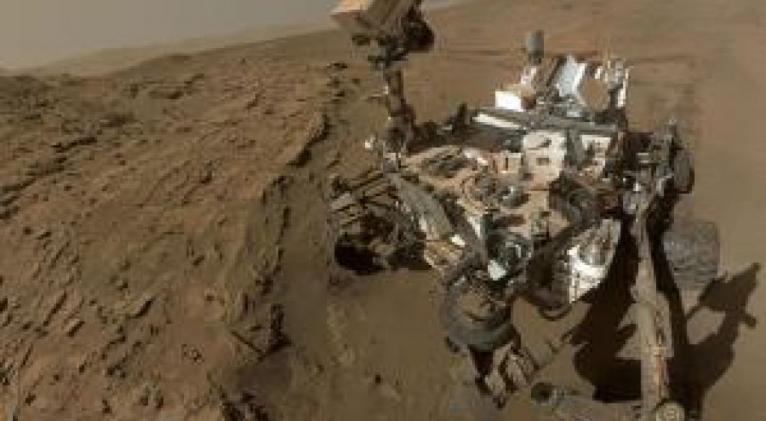NASA's Curiosity rover finds astronauts could farm water on Mars
especiales

Planetary scientists have seen a lot of evidence for frozen water at the Martian poles, and water vapour in the planet's atmosphere. Liquid water, on the other hand, has been harder to come by, as the temperature and atmospheric pressure at the surface is too low.
But the soil on Mars is known to host perchlorate salts, which lower the freezing point of water, meaning the chilly surface conditions are not an absolute barrier to liquid water.
Images from NASA's Phoenix lander in 2009 suggested it had liquid water running down one leg, but this sighting may also have been ice, leaving the case for liquid water inconclusive.
Martian nights
So Javier Martin-Torres of the Luleå University of Technology in Kiruna, Sweden, and colleagues have tracked the weather conditions on Mars throughout Curiosity's first Martian year, recording humidity, air and ground temperatures with its Rover Environmental Monitoring Station (REMS).
The team found that during Martian winter, conditions throughout the cold but humid nights would allow liquid water to be stable in the first 5 centimetres of the surface. Shorter periods of stability would also be possible in other seasons.
They suggest that calcium perchlorate in the ground absorbs water from the atmosphere until it dissolves into a salty solution, or brine. This process is called deliquescence. When the sun comes up and the temperature rises, the water evaporates and returns to the atmosphere, starting the cycle anew.
Curiosity can't measure this water directly, says Martin-Torres, but everything is in place for it to be there. "We find the conditions for brines to be produced, but if you want to measure them directly you need some other kind of measurement," he says, such as an instrument that can look for changes in electrical conductivity.
A briney solution
Alfonso Davila of the SETI Institute in Mountain View, California, says there is not enough evidence to be certain that there is liquid water on the current surface of Mars, but the result does indicate that the planet was previously wetter. "To me, the work is significant because it suggests that deliquescence processes could have been important in the past, when there was more water in the atmosphere and the temperatures were higher," he says.
If the water is there, it's unlikely to harbour life, as the temperature is below -30 °C on average – too cold for even extreme Earth microbes to replicate and metabolise. "The fact that no microorganisms on Earth can grow at temperatures lower than -20 °C or so suggests that this could be a hard limit for water-based life," says Davila.
This water might one day help life flourish on Mars in other ways, however. Martin-Torres is currently working on a proposed device for the European Space Agency's ExoMars rover, due to launch in 2018, that would exploit Curiosity's findings. "It's a proof of concept of an instrument that will take water out of the atmosphere to produce liquid water for astronauts," he says. Small containers holding salts and mounted on the rover would mimic the natural deliquescence process. If it works, future astronauts could do the same on a larger scale to support Mars exploration.













Add new comment